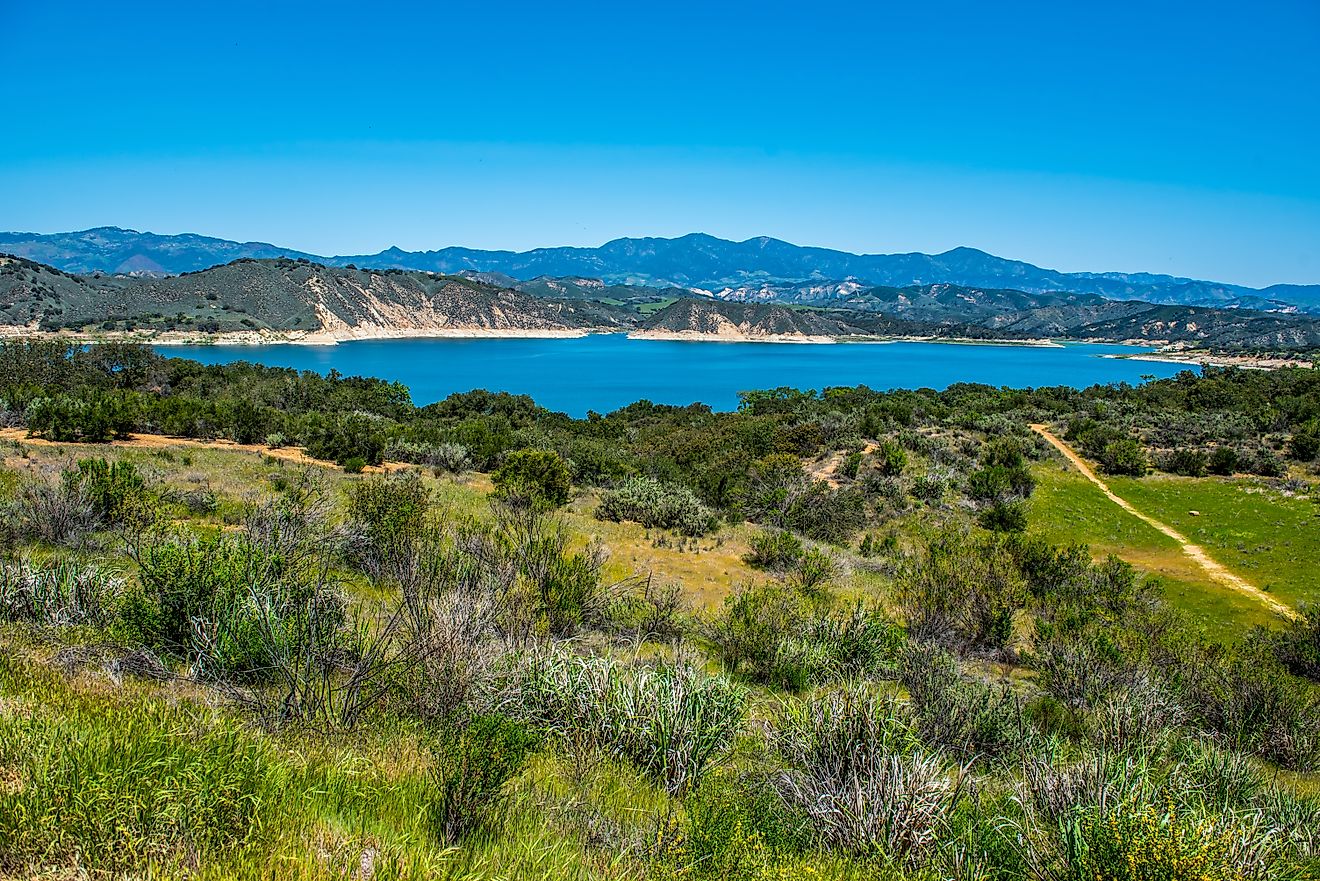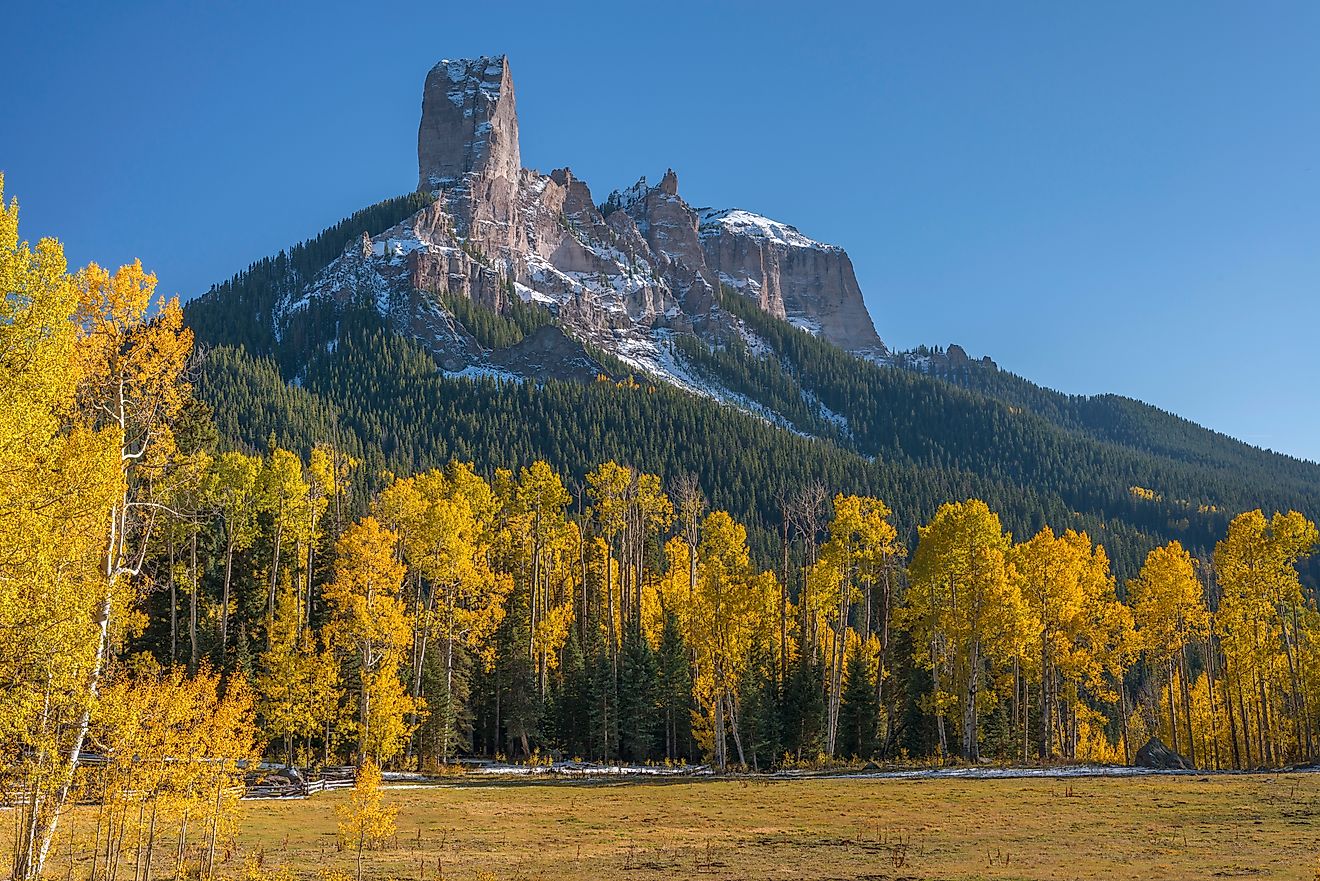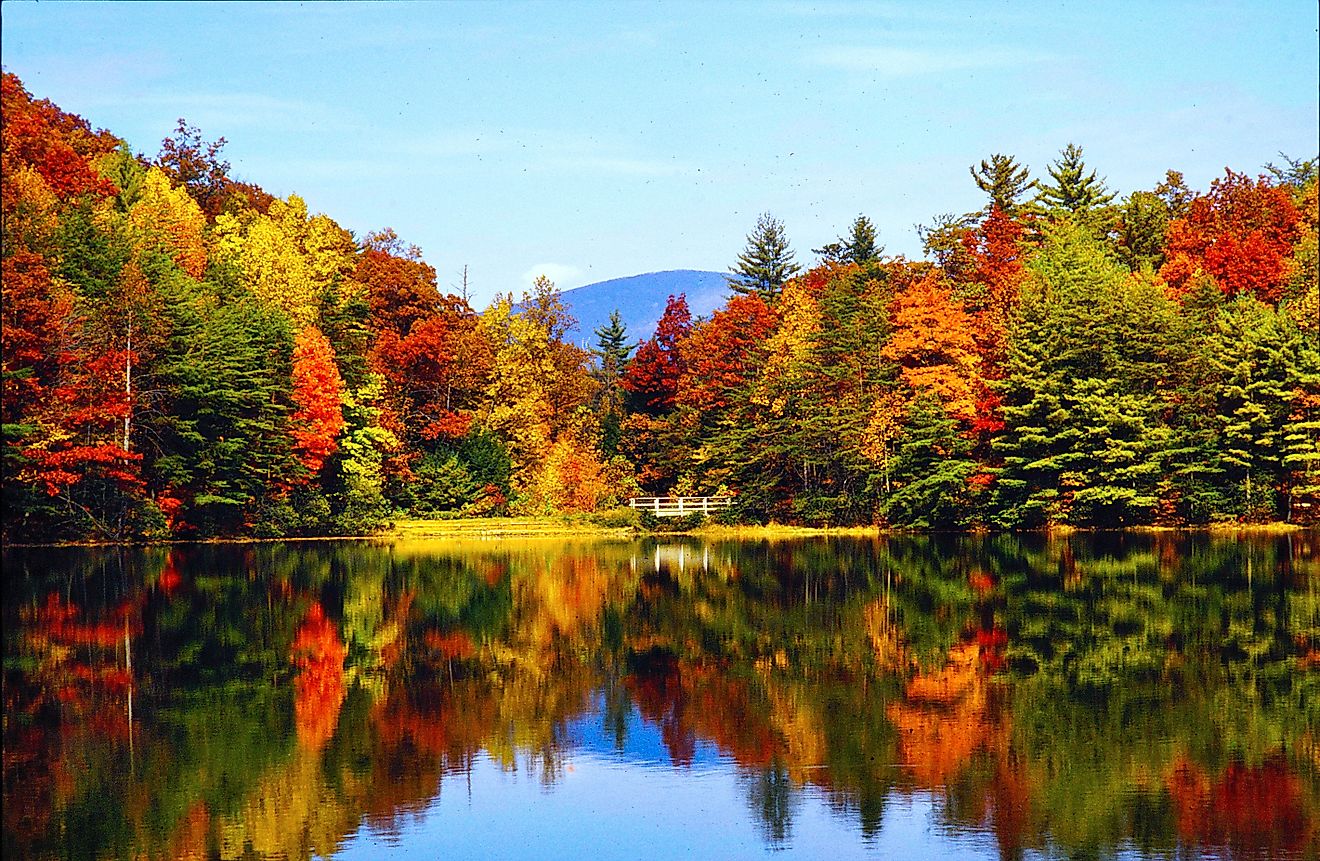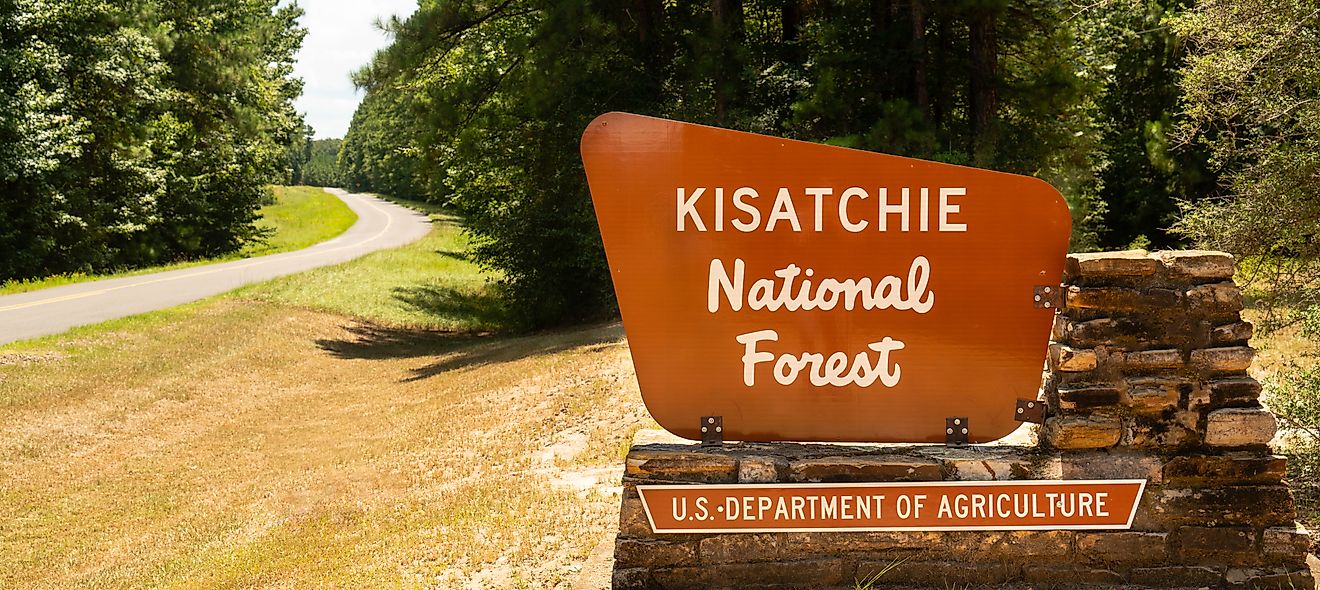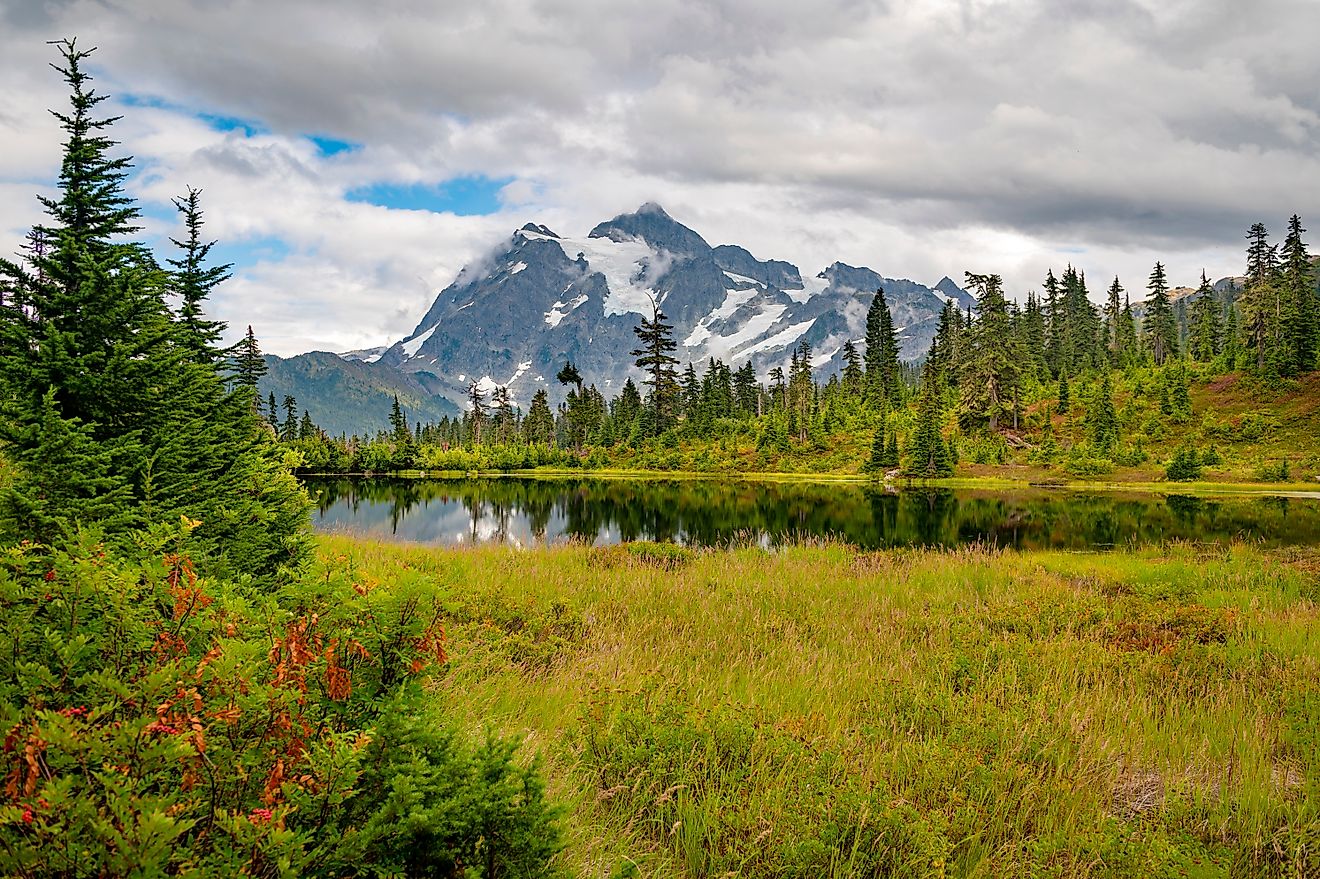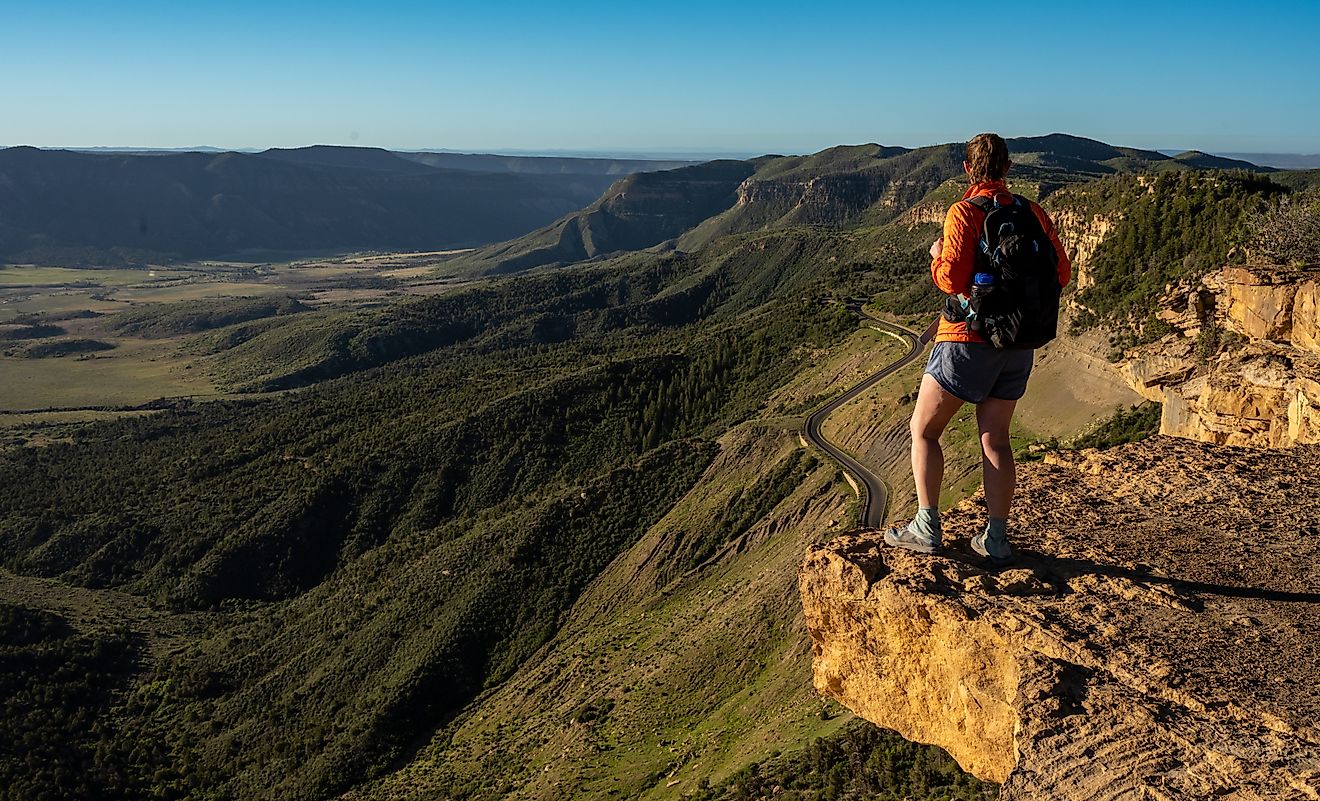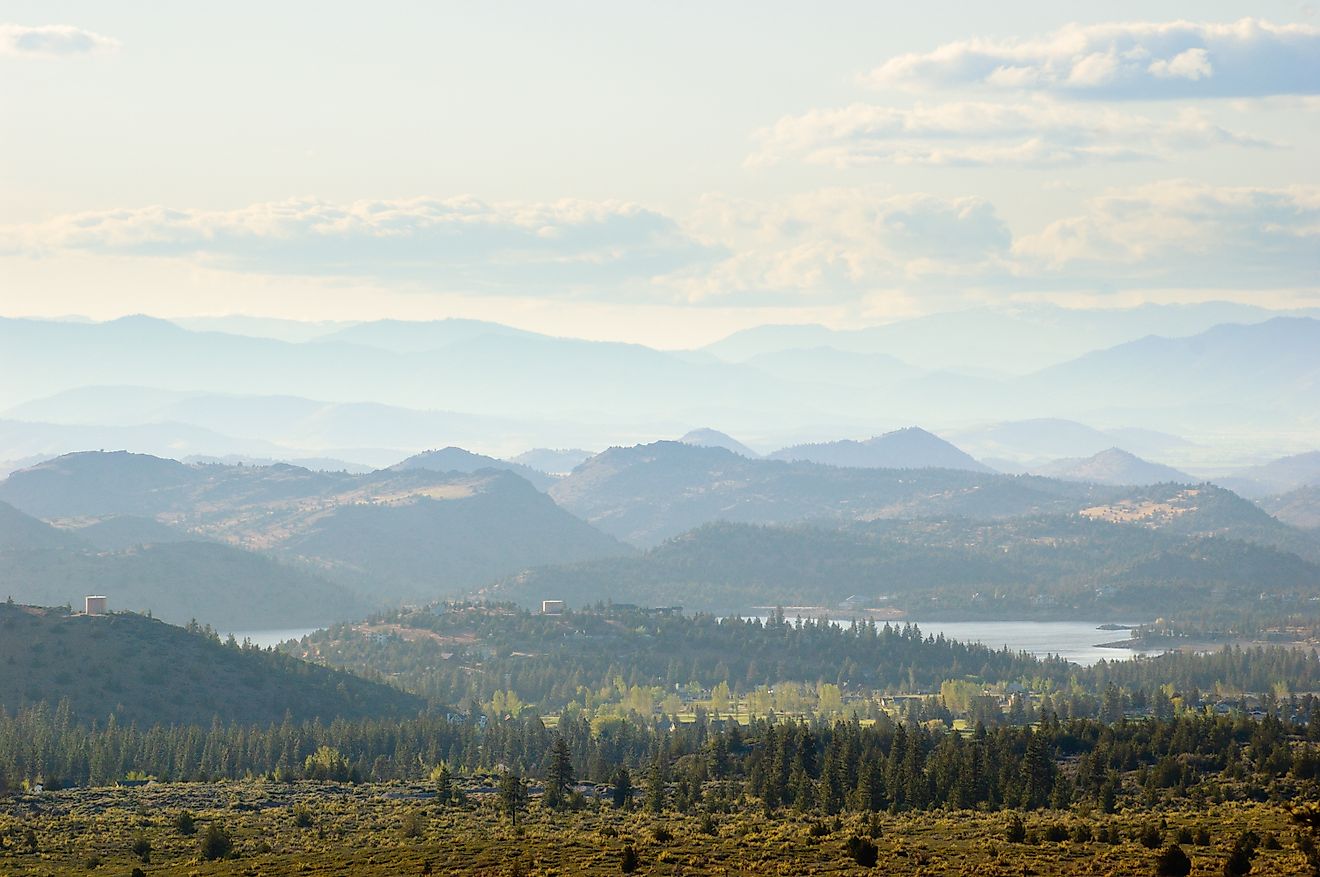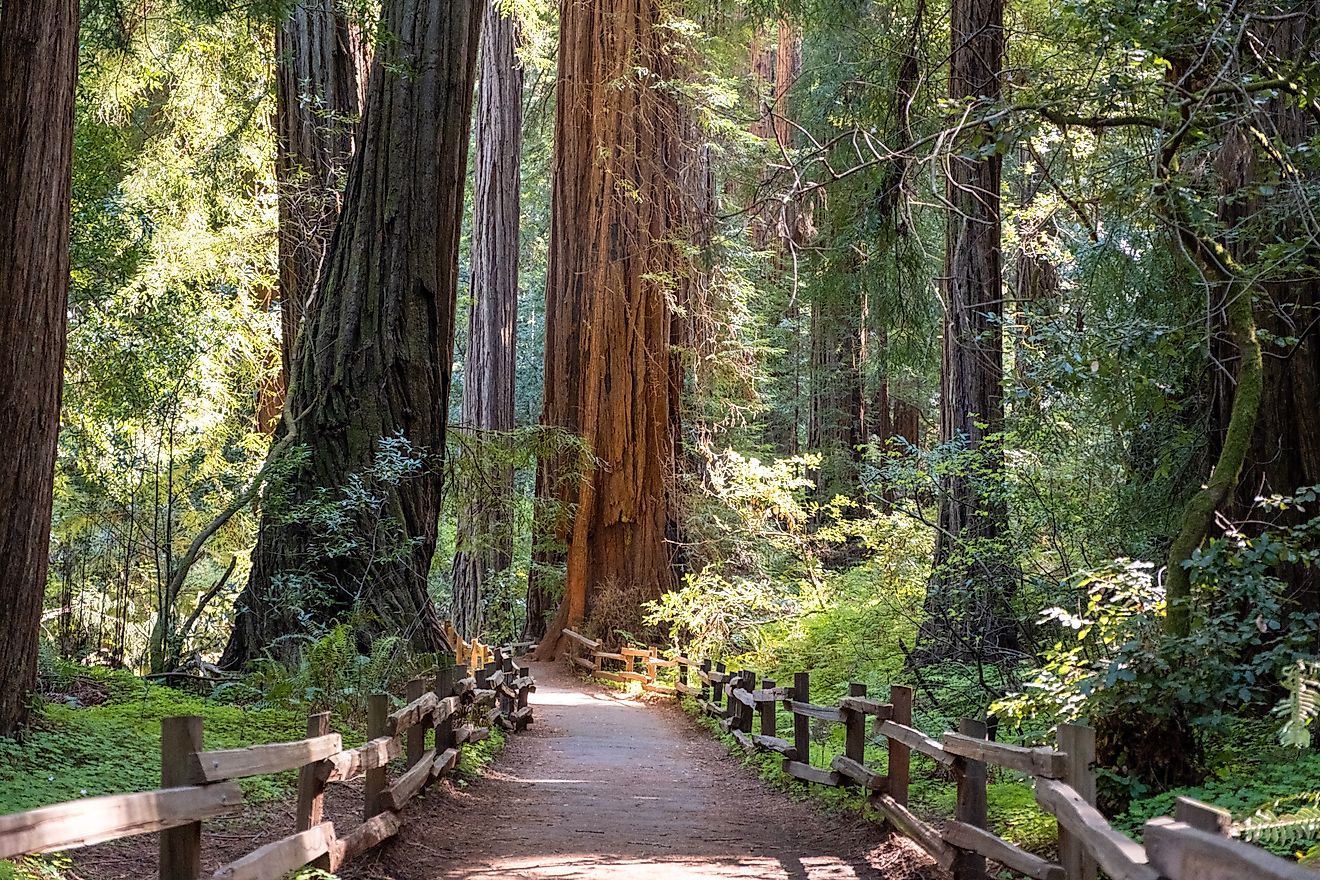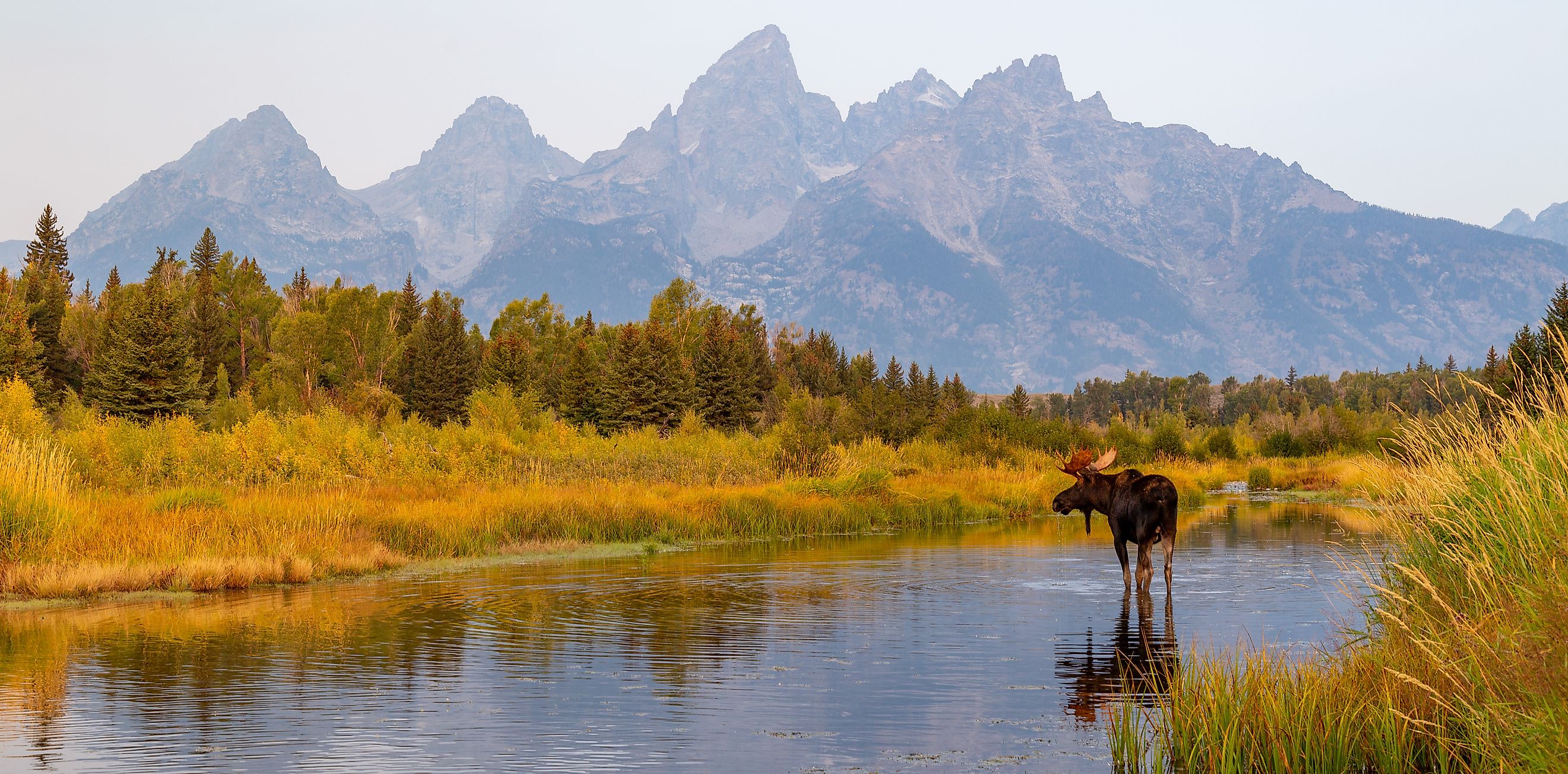
Grand Teton National Park
Grand Teton National Park, located in the northwestern corner of Wyoming, is one of America’s most iconic natural preserves. Spanning approximately 310,000 acres, this park protects the towering peaks of the 40-mile-long Teton Range and much of the Jackson Hole Valley. With its rugged mountains, alpine lakes, and thriving wildlife, Grand Teton remains a vital component of the 22-million-acre Greater Yellowstone Ecosystem — one of the largest intact temperate ecosystems on Earth.
A Landscape Shaped by Geology
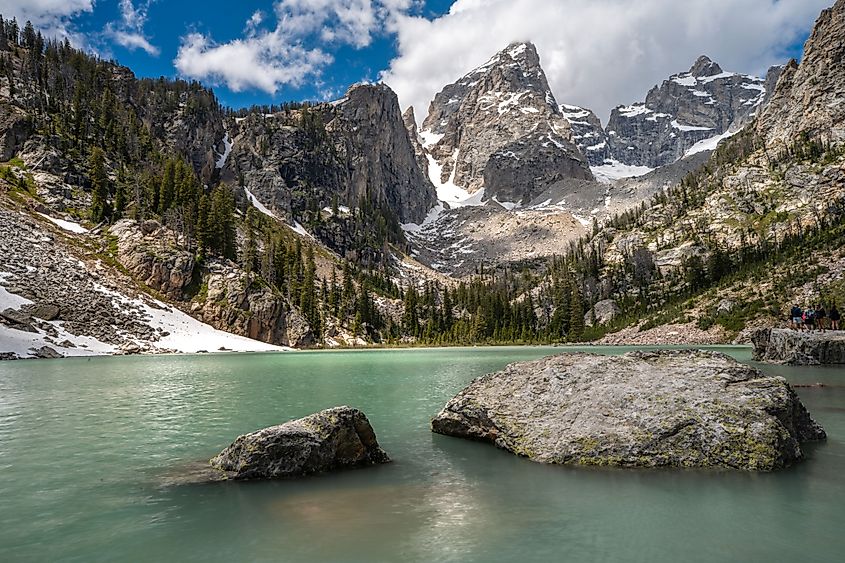
The Teton Range is the youngest in the Rocky Mountain system, formed between six and nine million years ago. Unlike many mountain ranges, the Tetons rise sharply without foothills, creating a dramatic skyline. The tallest peak, Grand Teton, reaches 13,775 feet and towers more than 7,000 feet above the Jackson Hole Valley. Nearby peaks like Mount Owen, Middle Teton, and Mount Moran add to the stunning ridgeline.
Jackson Hole, the valley that sits east of the Teton Range, was formed by the downward movement along the Teton Fault, creating a graben structure. This valley is relatively flat, with elevations averaging around 6,800 feet. Isolated hills and buttes, such as Blacktail Butte and Signal Mountain, provide viewpoints of the surrounding landscape.
Glaciers, Lakes, and Rivers

Glaciation has played a significant role in shaping the Grand Teton landscape. During multiple ice ages over the past 250,000 years, glaciers carved deep U-shaped valleys and formed lakes at the base of the mountains. Many of these glaciers have long since vanished, but their marks remain. Today, a dozen small glaciers persist, including Teton Glacier, the largest and most studied, nestled beneath the northeast face of Grand Teton.
The park contains more than 100 alpine and moraine lakes. Jackson Lake, the largest, stretches 15 miles and reaches depths of up to 438 feet. Although natural in origin, the lake was expanded by the construction of Jackson Lake Dam in the early 20th century to support irrigation. Other popular lakes include Jenny Lake, Leigh Lake, and Phelps Lake.
The Snake River, originating in nearby Yellowstone, flows through the park and is a vital waterway for wildlife and recreation. It enters Jackson Lake near the northern boundary, exits through the Jackson Lake Dam, and meanders south through Jackson Hole, forming oxbows and braided channels.
A Rich Cultural and Conservation Legacy
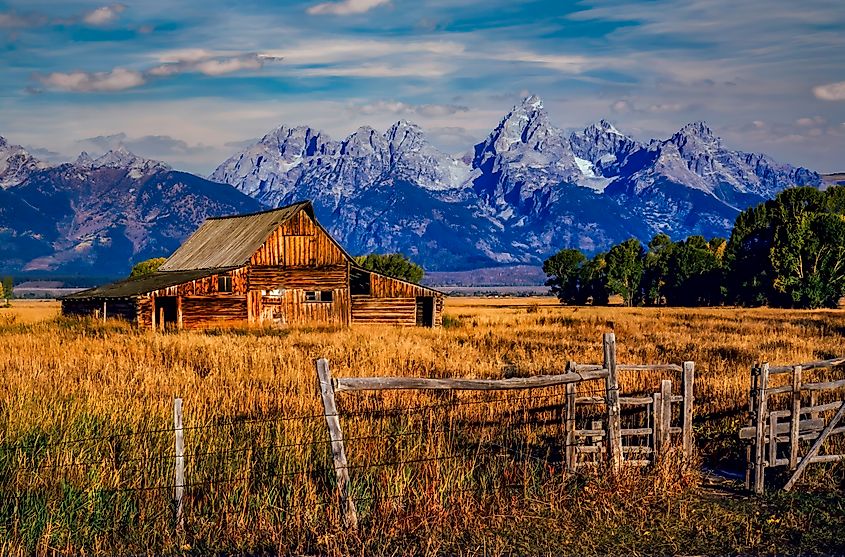
Human presence in the Grand Teton region stretches back at least 11,000 years. The Eastern Shoshone and other Native American tribes hunted, fished, and gathered in the area for generations. European American fur trappers and traders arrived in the early 1800s, drawn by the lucrative beaver trade.
By the late 19th century, conservationists began pushing for protection of the area. In 1929, Grand Teton National Park was established to protect the Teton Range and six nearby lakes. Efforts led by philanthropist John D. Rockefeller Jr. expanded the park dramatically in the mid-20th century. Rockefeller purchased thousands of acres in Jackson Hole, eventually donating the land for federal protection. These lands became part of Jackson Hole National Monument in 1943, and in 1950, the monument was merged with Grand Teton National Park.
Today, the park also includes the John D. Rockefeller Jr. Memorial Parkway, a scenic 24,000-acre corridor connecting Grand Teton to Yellowstone. The Laurance S. Rockefeller Preserve, opened in 2008, honors the family's continued conservation work.
Wildlife in the Tetons
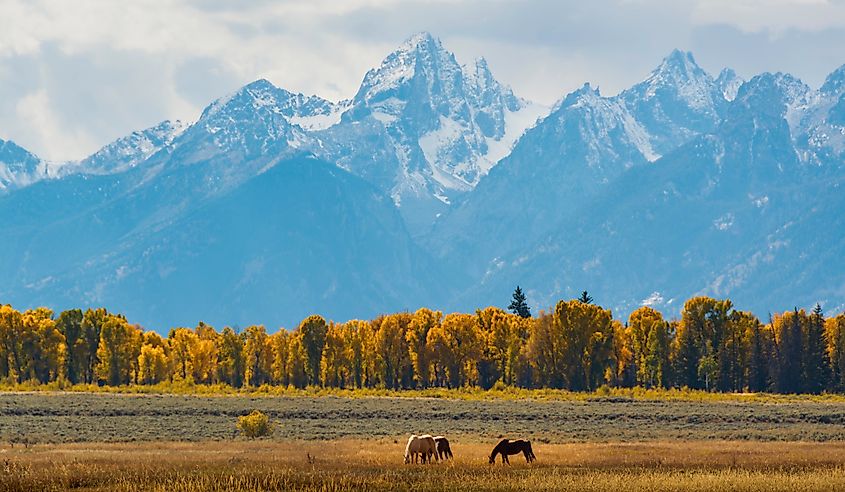
Grand Teton National Park is a stronghold for wildlife species that have roamed the region for millennia. More than 60 mammal species, 300 types of birds, and a dozen fish species make their home in the park.
Large mammals include grizzly and black bears, moose, elk, bison, mule deer, and gray wolves. Coyotes, mountain lions, and smaller predators such as foxes and badgers are also common. The park provides a critical migration corridor, especially for elk that winter in the nearby National Elk Refuge.
Birdwatchers can spot eagles, ospreys, hawks, and a wide variety of songbirds. The Snake River and park lakes support native fish such as the Snake River fine-spotted cutthroat trout. Conservationists have increased efforts to protect threatened species like the whitebark pine and native trout, both impacted by climate change and invasive species.
A Mountaineering Legacy
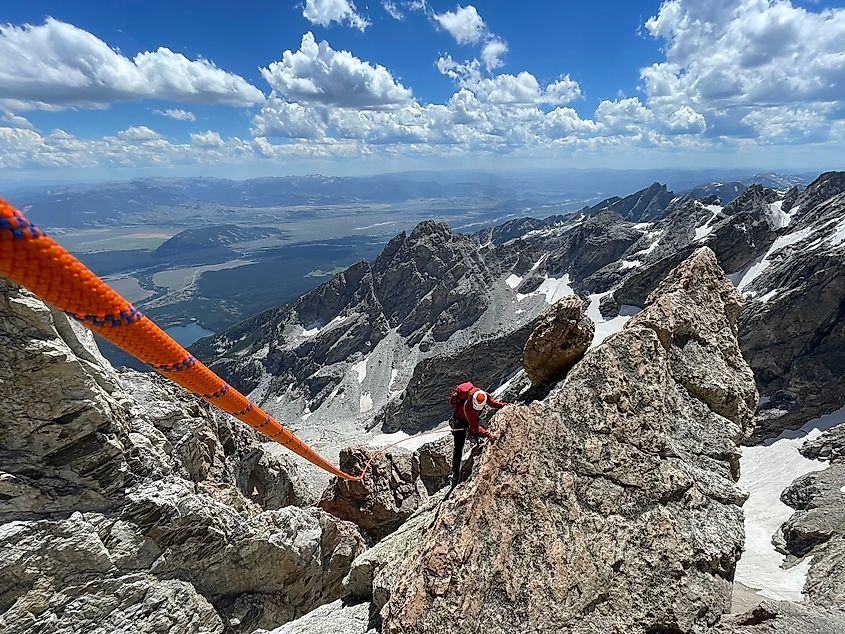
The dramatic Teton peaks have attracted climbers and explorers for more than a century. Native American relics found high on the mountains, such as The Enclosure, suggest that some summits may have been reached long before documented climbs.
The first widely recognized ascent of Grand Teton occurred on August 11, 1898, by William O. Owen, Frank Petersen, John Shive, and Franklin Spalding. Their route, now known as the Owen-Spalding, remains one of the most popular today. Climbing in the Tetons expanded rapidly in the 1930s with pioneers like Glenn Exum and Paul Petzoldt, who co-founded Exum Mountain Guides. By the 1990s, over 800 climbing routes had been documented, ranging from beginner-friendly scrambles to expert-level technical climbs.
Rock climbing and bouldering are also popular in the park, particularly near Jenny Lake. The introduction of gymnastic chalk by climber John Gill in the 1950s helped revolutionize climbing technique.
Recreation and Visitor Experience
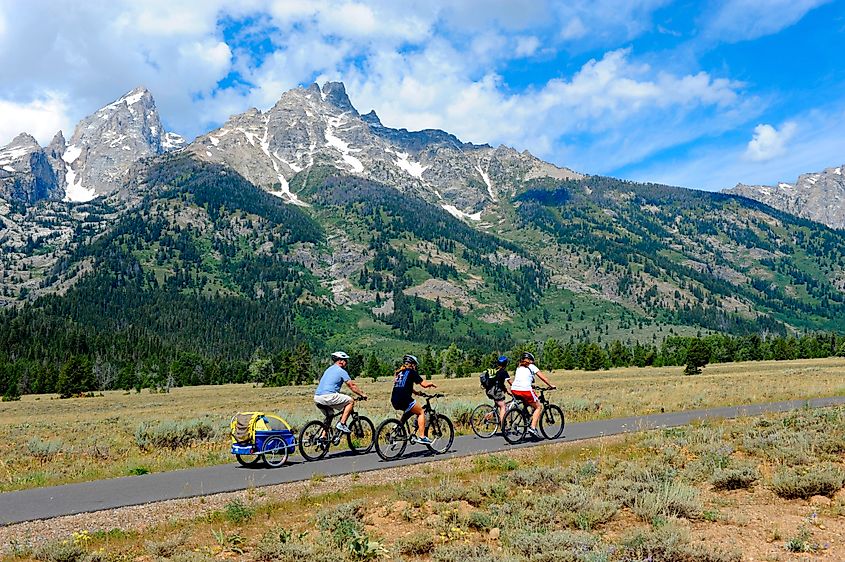
Grand Teton National Park offers a wide range of outdoor activities that appeal to every type of visitor. Hiking is perhaps the most popular activity, with more than 200 miles of trails winding through canyons, across alpine meadows, and up to panoramic viewpoints. Notable trails include Cascade Canyon, Paintbrush Canyon, and the Taggart Lake Loop.
Backcountry camping is available for those looking to explore deeper into the wilderness. Permits are required for overnight stays in the backcountry, and regulations are in place to protect both visitors and the fragile ecosystem.
The Snake River provides excellent opportunities for fishing, kayaking, and scenic float trips. Anglers can fish for native cutthroat trout, and outfitters in the region offer guided trips. Boating is allowed on several lakes, with marinas located at Jackson Lake and Colter Bay.
Wildlife viewing is especially popular during dawn and dusk when animals are most active. The park offers multiple pullouts and viewing areas for safe observation. Autumn brings a particularly photogenic scene, with vibrant fall colors and elk bugling in the valleys.
Several visitor centers operate within the park, including the Craig Thomas Discovery and Visitor Center near Moose, the Jenny Lake Visitor Center, and Colter Bay Visitor Center. These centers provide maps, ranger programs, and interpretive exhibits.
Getting There and Staying Nearby
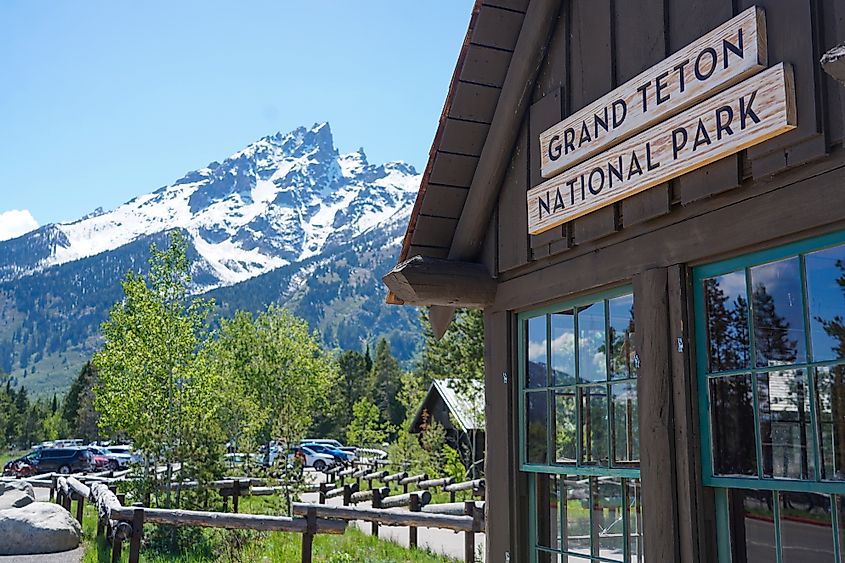
Grand Teton National Park is accessible by road from several directions. It lies approximately 290 miles from Salt Lake City and 550 miles from Denver. The town of Jackson, located just south of the park, offers accommodations, dining, and access to the Jackson Hole Airport, which is within park boundaries.
Lodging within the park includes campgrounds, rustic cabins, and historic lodges. Jenny Lake Lodge and Jackson Lake Lodge are among the most popular overnight options. Over 1,000 drive-in campsites are available across several campgrounds including Colter Bay, Signal Mountain, and Gros Ventre.
Winter transforms the park into a snowy wilderness, with opportunities for cross-country skiing and wildlife tracking. While most services are limited in winter, the solitude and scenery remain remarkable.
